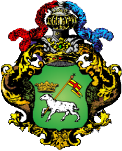|
Thought
The bridge, the square and the church of Santa Trinita together with via Tornabuoni, until a few years ago was the heart and the good living room of Florence. Now it is almost just a beautiful road but dead and the superficiality in which a city is managed. In this corner of "Paradise" there is a complexity of monuments and palaces where once the Florentinità was breathed, the history and the lively and pulsating culture of every citizen and visitor. If it were not for some shouting shop it would be a total collapse . Everyone goes on the Santa Trinita bridge, nobody or almost enters the basilica. Someone rises up to see the statue of fairness but we do not know who put it there. Florence until a few years ago was the city of flowers, with every balcony something flowery, the flowerbeds and gardens kept on stingy, on the other hand here were born the Italian gardens, together with art not only welcome but it also creates pleasure in walking while the eye meets the details.
History of the Bridge
As I said before Piazza Santa Trinita and the basilica and the bridge, are the heart of Florence, beauty and history come together in a harmony that give the heart and soul a different meaning. Florence is one of the few cities where at every step you ask yourself: "how is beauty possible"? The first bridge of the same name was built in 1252 with a legacy of the Frescobaldi family but it was short-lived.
During a show on the river the weight of the crowd people rushed to see it made him collapse. Florence needed that bridge and was rebuilt in stone but one of the recurring floods of the river, if it took it away in 1333. In 1557 we were at once again another flood and the bridge again in the Arno and we had to change constructive criteria but above all, to rely on capable people, also because that bridge should have carried out tasks of representation. In fact, from Porta Romana you arrive at the bridge and from this to the city center. To understand each other, "the capable people" were two: Bartolomeo Ammannati and Buonarroti. The former made the project materially, the latter most likely suggested an evolution of the rope lines already used in the construction of the Chapels of the Princes. The bridge rests on pointed pillars that cleverly avoid the trunks brought by the floods to accumulate and cause their collapse.
The elegance of the ropes gives the bridge a light and unusual line for a stone bridge. Finally, in 1608, on the occasion of the marriage of Cosimo II de 'Medici, four statues were placed at the corners of the bridge representing the four seasons. Summer and autumn are by Giovanni Caccini, while the spring and winter of the Francavilla. During the Second World War, at the passage of the front from the city all the bridges minus one (the old bridge) were made to shine by the Germanic troops. To make it collapse, they had to undermine it three times by exhausting every explosive stock in the city. Below, given that the calculation of the string of the strings had not yet been understood, it was rebuilt in armor and clad again according to the original appearance. Those who do not know the story certainly do not see the difference.
Piazza Santa Trinita - The column of justice.
As soon as you arrive at the square, immediately jump to the eyes a very high column with a statue on it. This is the column from the Baths of Caracalla and donated to Florence by Pope Pius IV (a Medici) on which the statue of justice was placed in 1581.
Piazza Santa Trinita - The Basilica
The Basilica of Santa Trinita (yes, in Florence is written and reads without a final accent), is one of the oldest and most important in Florence, though not as majestic as many others. The construction dates back to the eleventh century by the Vallombrosani Monks outside the walls of the time. There remained little and in 1172-75 she was also included in the city. The basilica is in Romanesque style, sober and austere like the founding order. The original floor was mosaic and featured drawings of mythical and fantastic animals. It was rebuilt around the mid-1200s and was the first Gothic church in the city. It is divided into three naves, separated by thin quadrangular columns. The bell tower is not external masi rests on a supporting wall and to access it you must first climb the roof and then climb steep stairs.
Two important chapels inside, the Strozzi and the Sassetti that are worth seeing. You can admire frescoes by Ghirlandaio, Fabriano, Passignano, Spinello Aretino, Baldovinetti, Bicci di Lorenzo and also by Giovanni da Ponte and Maso da San Friano. There are also works by Sangallo and Lamberti (the sculpted tombs), a polychrome ceramic by Della Robbia. Some important works such as the majesty of Cimabue have been moved (Uffizi or others to San Marco). |





